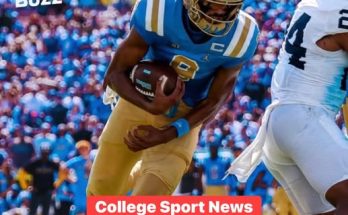Here’s an in-depth look at LSU baseball’s efforts to bolster its pitching depth, especially following Oregon State right‐hander James DeCremer’s transfer visit, within an aggressive portal strategy. I’ll explain what DeCremer brings, how LSU is targeting similar arms, and what it all means for their season outlook—all without subheadings, per your request.
LSU enters the offseason with a clear message: prioritize pitching. Under Coach Jay Johnson, the Tigers have repeatedly used the NCAA transfer portal to reload their roster with impact arms. According to Baseball America, LSU boasts nine Top‑100 transfers for 2025—more than any other team, SEC or otherwise . Among these are right‑handers Anthony Eyanson from UC San Diego, Zac Cowan from Wofford, Jacob Mayers from Nicholls State, Deven Sheerin from Mount St. Mary’s, and Chandler Dorsey from South Florida—fresh additions to a pitching staff already regarded as one of the nation’s deepest
Eyanson headlines the incoming group: 6–2 record with a 3.07 ERA last season, quickly slotted into LSU’s weekend rotation Cowan, a workhorse, logged 110 innings with a 3.35 ERA, routinely going six-plus innings ( Mayers adds swing-and-miss bite, while Sheerin—topping 98 mph—piled up 109 strikeouts in 70 innings (. And Dorsey provides late-inning options, with eight saves and a 3.60 ERA last year .
Amid those high-profile pickups, James DeCremer represents a slightly different value profile. A redshirt freshman from Oregon State, he posted a 3–0 record with a 5.34 ERA over 28.2 innings, racking up 30 strikeouts After back surgery in 2024, DeCremer debuted in 2025, primarily out of the bullpen before making three starts late in the season—including shutting out USC over five innings in a regional elimination game, striking out six . His decision to enter the portal—announced June 20—caught many off guard , and LSU has pushed to bring him in.
DeCremer clearly seeks a weekend starter’s role—something Oregon State couldn’t guarantee. The BVM Sports tracker notes that he entered the portal likely to “seek a starting role elsewhere” . LSU, known for pitching depth yet perennially hungry for more, fits that profile. Coach Johnson has emphasized an approach: focus on “immediate contributors” rather than projects , and DeCremer’s experience on big stages—Pac‑12 regionals and Super Regionals—fits that mold. His ability to handle postseason pressure suggests LSU sees him as more than bullpen fodder; he’s a candidate for weekend innings or high-leverage relief.
This visit by DeCremer to LSU signals mutual interest. For DeCremer, it’s a chance to join a staff where he can carve out a defined role alongside proven arms like Eyanson, Cowan, Sheerin, and Dorsey. For LSU, it’s another piece in a portal puzzle that aims to sustain dominance on the mound, a philosophy that has served them well. As Yardbarker noted, LSU and Arkansas “have arguably the deepest pitching staff in the country” heading into the season . DeCremer may not have the gaudy strikeout totals of his portal-bid peers, but a mid‑5 ERA hides glimpses of his potential—like the shutout outing against USC and strong elimination‑game pedigree.
LSU’s portal pursuit for pitchers isn’t just a reaction to loss—it’s proactive reinforcement. On3 reports that LSU sees the transfer portal as a way to immediately replenish, not merely replace, stating that Johnson wanted high‑quality arms “instead of players who potentially are more projects or younger” . This reflects a strategic pivot: LSU expects to lose multiple arms to the MLB Draft and graduation every year—last year alone saw Luke Holman, Gage Jump, Griffin Herring, and several others go pro . The experience with draft-heavy departures has shown Johnson that to stay competitive, LSU must maintain hub-like options along its pitching depth chart.
In that context, DeCremer’s 28 innings and regional performance are valuable. He’s not an unknown commodity; he’s seen postseason baseball and prevailed in critical matchups. That counts. Plus, with three years of eligibility left, he offers runway to grow while contributing now.
The immediate benefit of adding DeCremer lies in flexibility. LSU’s rotation and bullpen both have layers, and each arm has a role. DeCremer can slot as a multi-inning reliever who can spot start or eat innings out of the ‘pen. Moreover, if Eyanson, Cowan, Mayers et al. stumble or face injury, DeCremer provides insurance. Depth matters in the long SEC season and especially for deep postseasons.
And it’s not just DeCremer LSU is targeting. His situation typifies the type of pitcher LSU wants: experienced, competitive at a high level, and hungry for opportunities. It’s likely LSU is monitoring other Pac‑12 or West Coast transfers who fit this mold—energy arms with postseason experience but in search of bigger roles.
Looking at the bigger picture, LSU’s current roster construction reflects a dual-axis strategy: high-upside breakout arms (think Eyanson and Sheerin) and dependable depth pieces (like DeCremer). That combination allowed LSU to build one of the strongest staffs in college baseball. As Yardbarker highlighted, their staff could match Arkansas for best in the country .
But as LSU mindfully adds talent, it’s not hoarding arms—it’s sowing insurance. Every additional arm helps resist fatigue, injury, or slumps. The SEC grind tests every rotation. Depth not only strengthens the weekend rotation—it supports late-game matchups, bullpen management, and roster flexibility.
The portal visit by DeCremer is a clear signal to other prospects: LSU remains aggressive and selective. They’ve already engaged with DeCremer, and bringing him into Baton Rouge could pay dividends beyond his own contributions. For the staff, it’s about constructing a layered roster resilient across scenarios.
On the other side, DeCremer’s choice is strategic. He steps off a mid-major depth chart, albeit on a winning Oregon State team, and enters a high-risk, high-reward environment. At LSU, he competes alongside seasoned arms, walks into hunted roles, and gains exposure to SEC competition and national audiences. It’s a step up in intensity, but also one that can accelerate development and draft stock.
We shouldn’t discount possible challenges. LSU’s depth also means competition. DeCremer may still fight for innings. But LSU’s commitment to nurturing high potential makes it an attractive landing spot. A pitcher with his profile—postseason performance, collegiate experience, and remaining eligibility—has real upside.
LSU’s portal haul reflects program-wide calculation, with DeCremer being one of many puzzle pieces. Eyanson anchors the rotation. Cowan, Mayers, Sheerin provide strikeout depth. Dorsey and others build situational options. DeCremer brings bullpen depth and rotation insurance, rounding out a comprehensive arsenal.
Even without certain additions, LSU’s depth ensures it remains tournament-ready. And if injuries or performance issues emerge, DeCremer’s role could grow quickly, especially if he makes an early impression in fall camp or scrimmages.
Adding DeCremer doesn’t eclipse marquee transfer headlines. But it symbolizes LSU’s broader strategy: aggressive portal use, layered depth, and calculated competition. In the crucible of SEC baseball, those ingredients matter—especially when the goal is Omaha and beyond.
If DeCremer joins LSU, he’ll be part of a staff arguably deeper than any other in college baseball. But more importantly, LSU will have answered one more question mark, secured another high-ceiling pitcher, and reinforced a culture that refuses to back down from turnover. Stability doesn’t come from retaining every arm—it emerges from continuously recalibrating, reloading, and reinforcing at every position.
LSU baseball is making a statement: no matter the losses, they’ll replenish, retool, and reload. DeCremer fits that mold. And if he lands in Baton Rouge, it won’t just be a transfer—it will be another clause in LSU’s SEC-to-Omaha blueprint.



